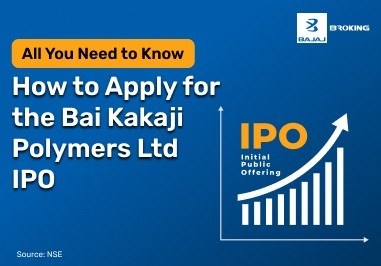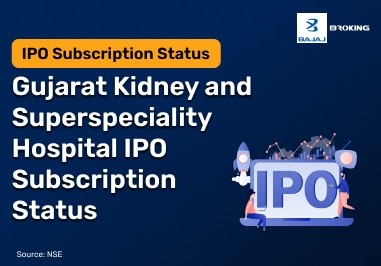Stock prices rarely stand still. They move all the time, sometimes in ways that feel routine, and at other times in ways that catch your attention. I remember staring at a chart once and thinking, something feels off. A stock closed at one price yesterday, but today it opened somewhere completely different, leaving a visible gap on the chart.
This jump is what traders call a gap. It can be a gap up when the price opens higher, or a gap down when it opens lower. Understanding these gaps can help you make sense of sudden changes in the market, rather than being surprised by them.
What is Gap Up?
Picture this: you need to open a trading account and see a stock go up throughout the day. Everything seems stable when the market closes. But the next morning, the stock starts much higher than it did yesterday. The gap above is the small blank region on the chart.
A gap up means that the price at open today is higher than the price at the close yesterday.
Good news: A new product launch, fantastic earnings, or a significant deal can drive people to buy quickly.
Market Rally: When the entire market is higher, the individual stocks/ETFs generally rise with it.
Short squeeze: When traders who are betting against a stock get unexpected good news, they may hurry to cover their positions, which drives prices even higher.
What is Gap Down?
Gap down is just the other way around. It happens when a stock opens lower than it did yesterday, creating a gap on the chart again.
Potential causes for a gap down may include:
Bad news: If a company experiences negative results, has to call back products, or has a sudden change in leadership, investors can lose confidence in the company.
Market correction: Prices could be in decline, and the entire market could be declining with some issues declining in price.
Analyst downgrades: If the issue is downgraded by analysts, investors may sell right away.
Heavy Selling: Large institutional selling or block deals can cause prices to drop significantly.
Addtional Read: What is Stock Market Correction
Types of Gaps in the Stock Market
Not every gap means the same thing. There are two basic types that traders refer to:
Breakaway gaps:
These occur when a stock moves beyond its usual trading range. A breakaway gap up could indicate that a lot of people are buying, while a breakaway gap down could indicate that a lot of people are selling.
Continuation gaps:
It occurs in a trend that is currently happening. A continuation gap up might show that there is still buying momentum if the stock is going up.
If the stock is going down, a continuation gap down could show that selling pressure still exists.
Difference Between Gap Up & Gap Down
Feature
| Gap Up
| Gap Down
|
Price movement
| Opens above the previous day’s close
| Opens below the previous day’s close
|
Investor mood
| Linked with optimism or good news
| Linked with caution or bad news
|
Characteristics of Gap Up & Gap Down Stocks
There are certain communities that cause gap up stocks and gap down stocks to be unique. Understanding these communities can help traders determine whether the gap is significant or just noise.
Here are a couple things to remember:
There was a change in price from yesterday's close to today's open without any participation.
Usually as a result of news, shifts in the market structure, or simply investors' sentiments.
They can show momentum, but they can also change direction fast.
The gap's strength or weakness is generally determined by the volume of trades.
What is a Partial Gap Up/Down?
Not all gaps are big. A stock may open higher or lower than it did yesterday, but it may still trade inside the range of prices from yesterday. These are known as partial gaps.
Partial gap up: The opening is higher than the previous close but lower than yesterday's high. It shows some buying pressure, but not enough to get through.
Partial gap down: The opening is below the last close but above the low from yesterday. It shows selling, but not enough to bring prices down a lot.
Gap Strategies in the Stock Market
Some traders try to employ gaps as part of their plan. But gaps can be hard to deal with, so it's important to manage your risks. Some common ways to do this are:
The direction of trading: Buying after a gap up or selling after a gap down to take advantage of the momentum. It works if the move keeps going, but it's perilous if the space fills up rapidly.
Trading the fill: It means waiting for the price to move back into the gap and then trading in the other direction. If gaps often fill, then this could be a good way to make some money. However, if momentum persists, it could be hazardous to your financial health.
Factors to Keep in Mind When Gap Trading
If you are thinking about gap trading, here are a few things to keep in mind:
A gap in stock prices doesn’t necessarily indicate a set market direction; prices can reverse or move unpredictably afterward.
Volume plays a crucial role; higher trading volume during a gap makes the price movement more reliable and easier to interpret.
Always seek confirmation; never rely solely on the gap itself, but also examine overall trends, patterns, and market context.
Risk management is essential; if the trade goes against you, using stop-loss orders can help limit potential losses effectively.
Conclusion
Gap up and gap down movements give traders a quick sense of market sentiment, signaling hope, fear, or sometimes just noise. However, gaps alone don’t provide the full picture. By combining gap analysis with other technical tools and keeping strong risk management strategies in place, traders can navigate market fluctuations more effectively.
Understanding these movements in context helps make informed decisions, control potential losses, and improve overall trading performance while reacting appropriately to sudden price changes.













